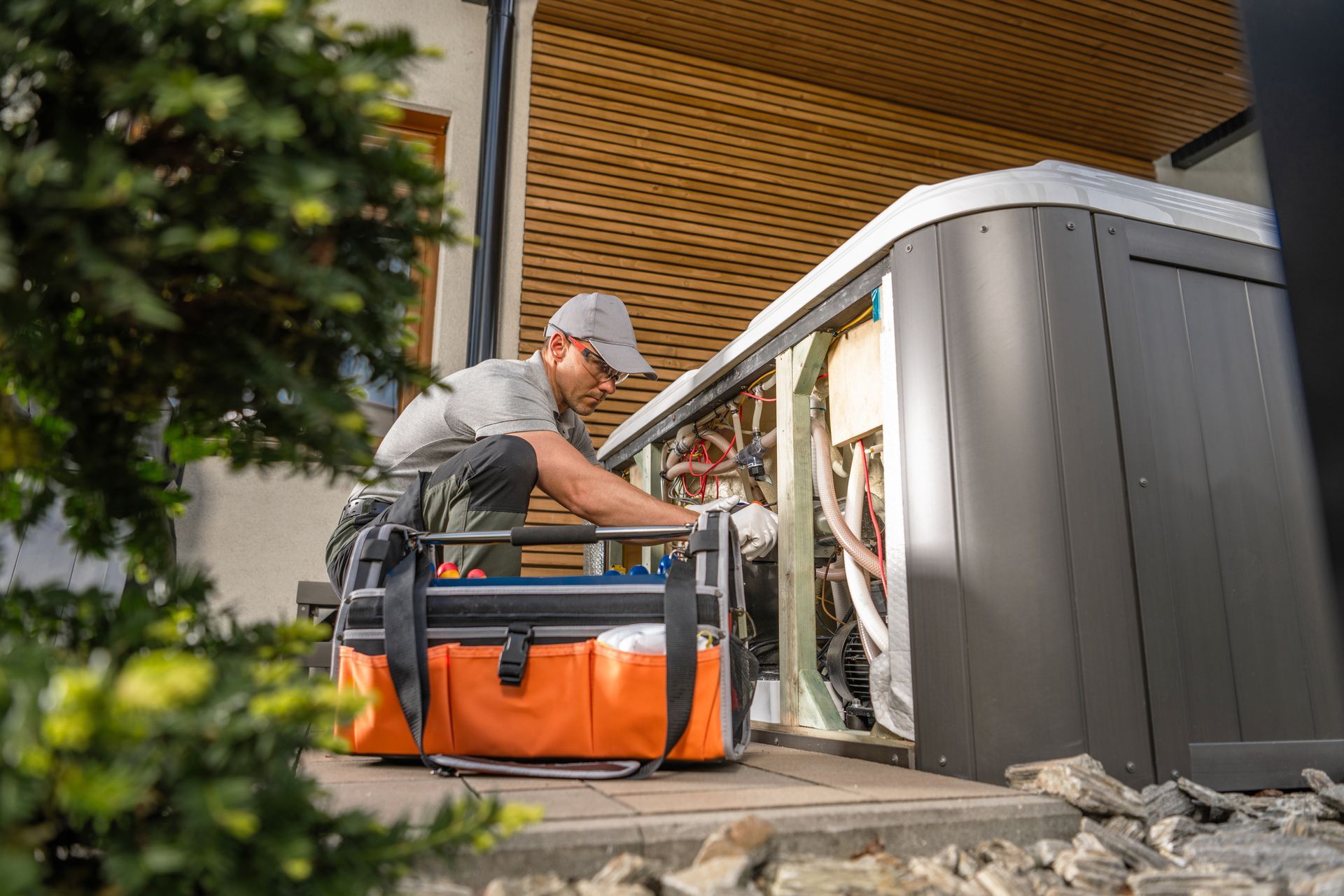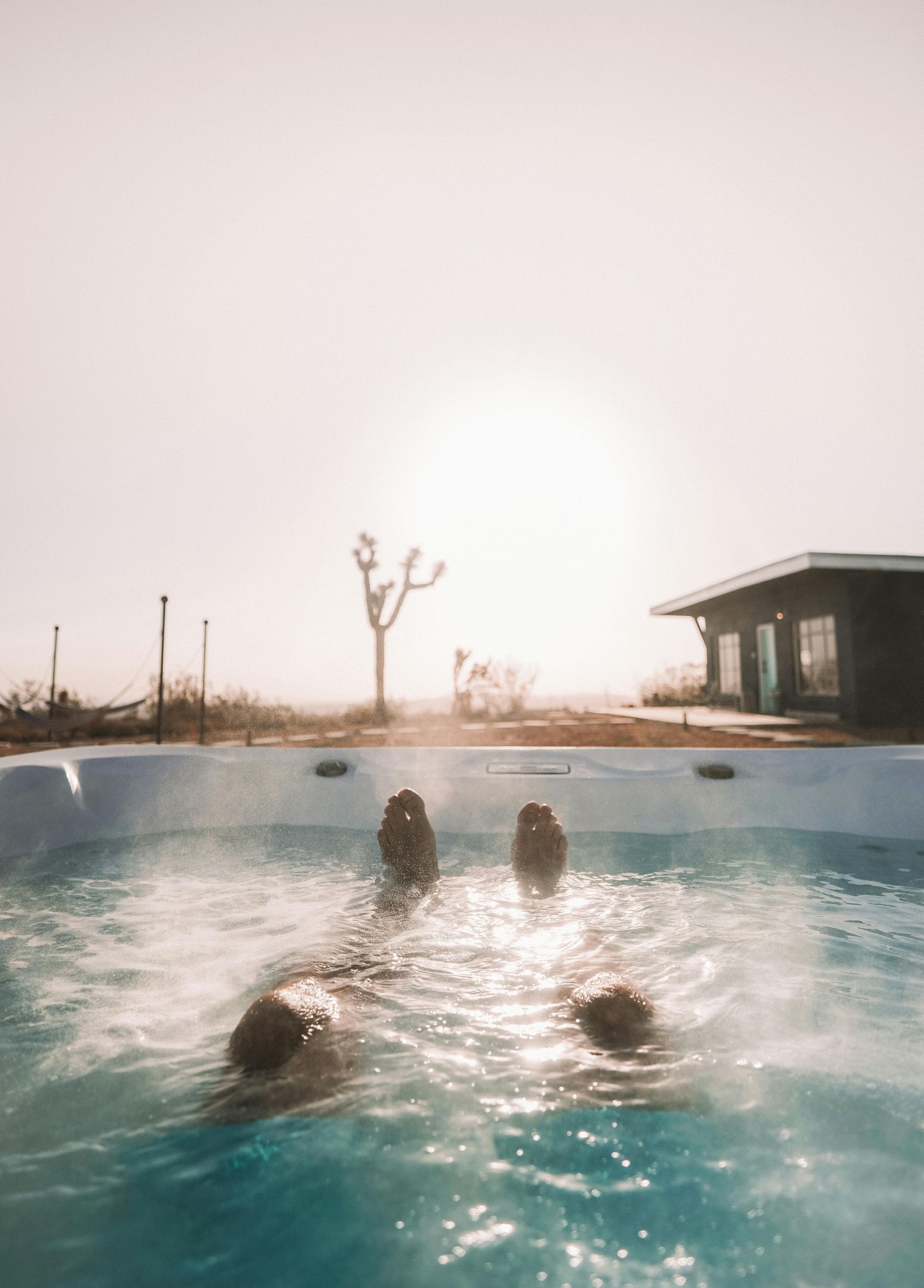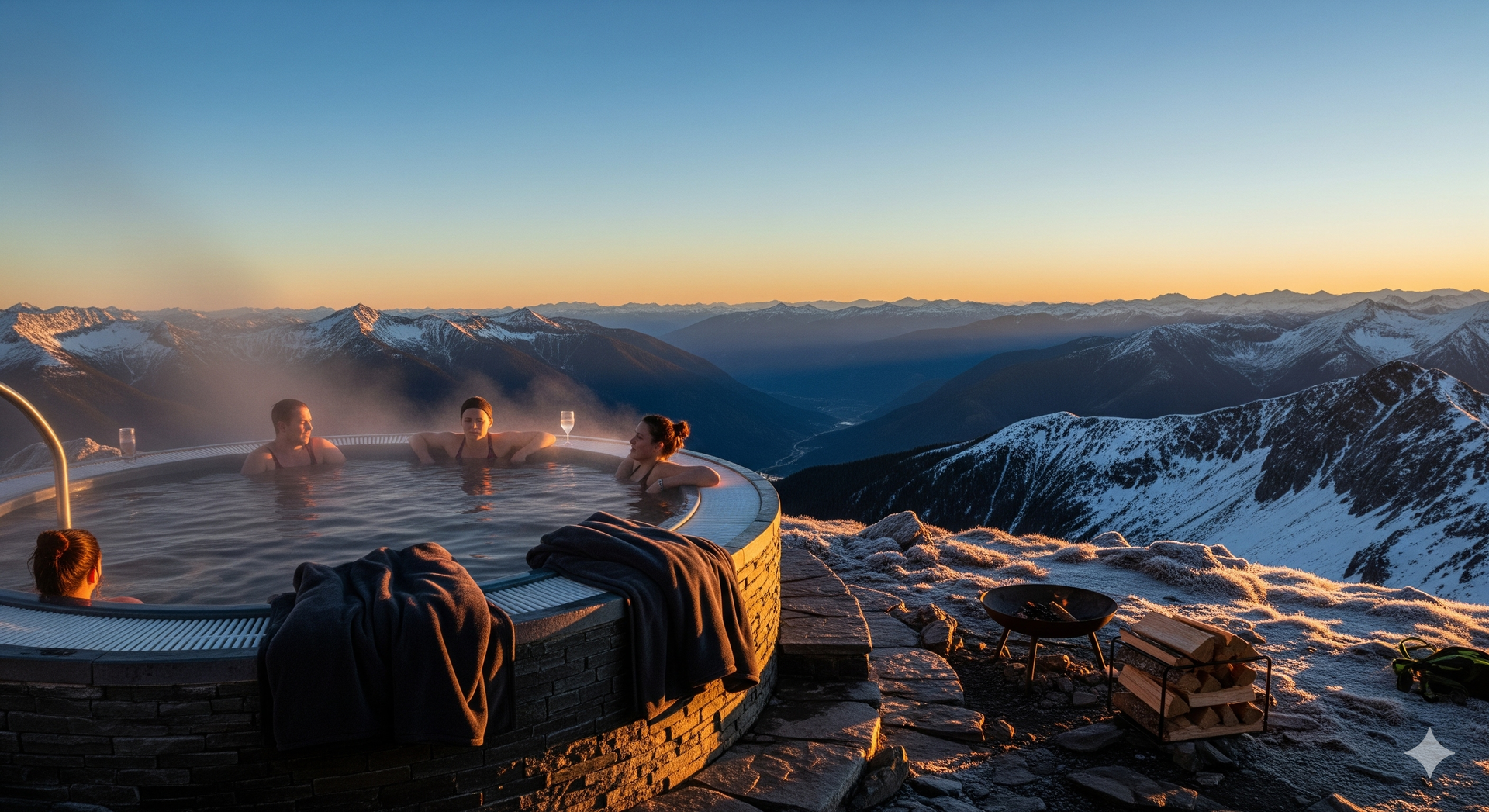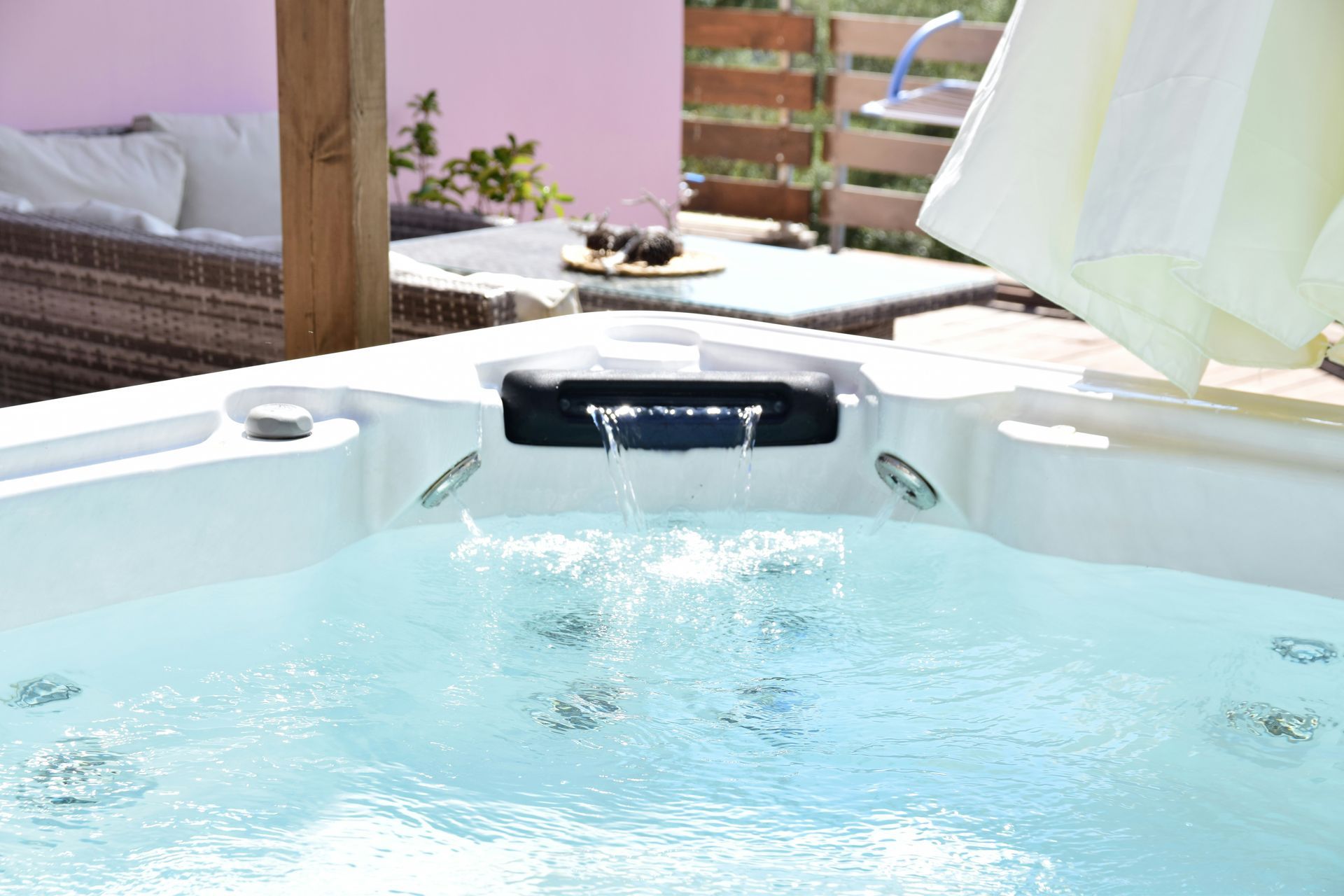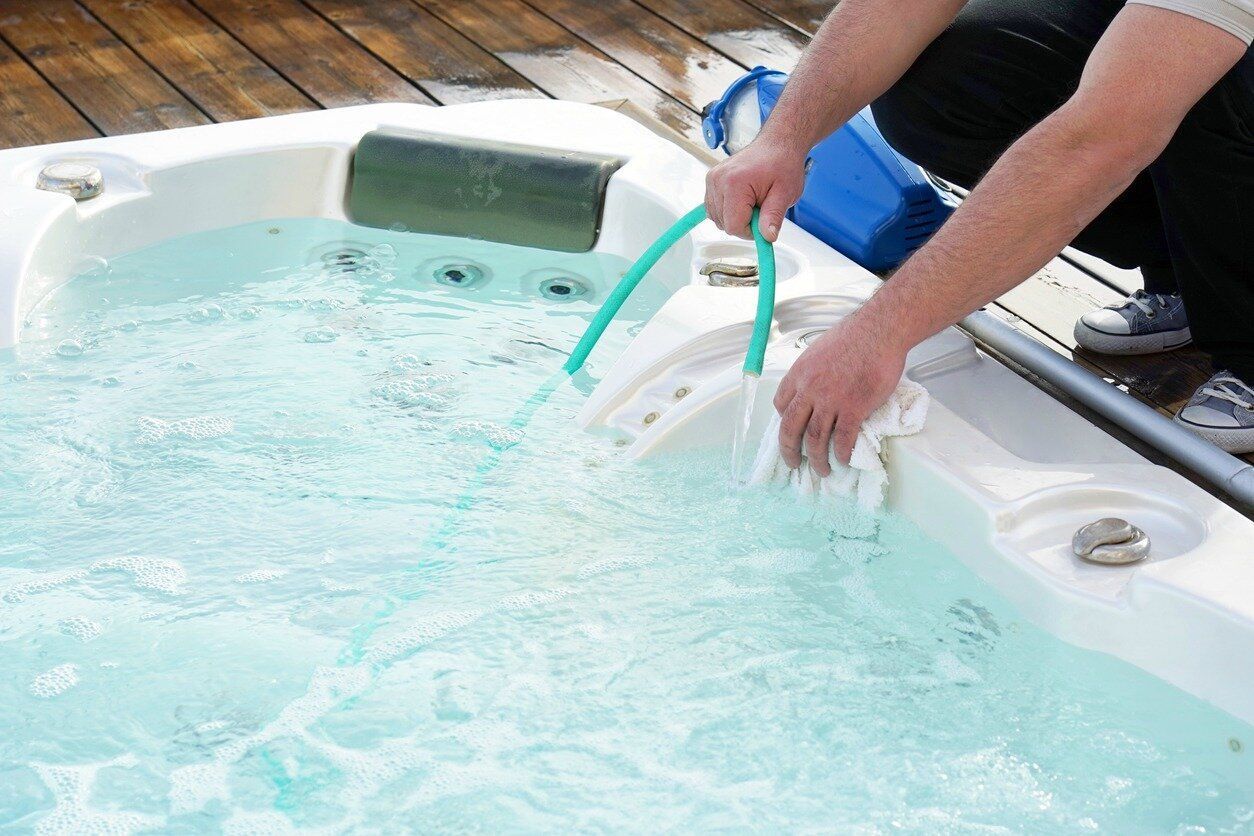Winterize Your Hot Tub the Safe Way: A Step-by-Step Colorado Guide
Colorado's harsh winter conditions pose unique challenges for hot tub owners who need to protect their investment during freezing temperatures of Colorado's winters. Proper winterization prevents costly freeze damage and ensures your equipment remains in excellent condition.
Key Takeaways
- Complete system drainage and antifreeze application prevent freeze damage during Colorado's extreme winter temperatures
- Professional winterization services ensure proper procedures and warranty protection for expensive hot tub equipment
- Timing winterization before consistent freezing weather saves money on emergency repairs and system replacements
- Proper cover installation and insulation protect both mechanical components and spa shell integrity
- Regular maintenance checks throughout winter months prevent small issues from becoming major problems
- Spring startup procedures require careful attention to avoid damage when reactivating winterized systems
Understanding Colorado's Winter Challenges for Hot Tubs
Colorado's elevation and continental climate create particularly harsh conditions for outdoor hot tub equipment. The state's unique weather patterns present multiple challenges:
- Temperatures can plummet well below zero degrees Fahrenheit
- Strong winds increase heat loss and stress heating systems
- Frequent freeze-thaw cycles damage unprotected components
Water expands by approximately 9% when it freezes, creating tremendous pressure that damages equipment. Even small amounts of residual water left in plumbing lines cause significant problems when temperatures drop.
Mountain communities face additional environmental stresses:
- Extreme temperature swings between day and night
- Chinook winds reaching hurricane-force speeds
- Heavy wet snow exceeding spa cover weight limits
Essential Tools and Supplies for Safe Winterization
Successful hot tub winterization requires specific tools and materials designed to protect your system from freeze damage. Having the right supplies on hand before beginning the process ensures thorough protection and prevents delays that could expose your equipment to freezing conditions.
| Required Tools | Essential Supplies |
|---|---|
| Garden hose and nozzle attachment | Non-toxic hot tub antifreeze |
| Wet/dry vacuum with hose attachment | Pipe plugs and caps |
| Adjustable wrench set | Waterproof cover protectant |
| Screwdriver set | Clean towels or rags |
| Flashlight or work light | Equipment storage bags |
Step-by-Step Winterization Process
Power Down and Initial Preparation
Begin the winterization process with proper safety preparation:
- Shut off power at the main electrical panel completely
- Remove equipment panel cover to access internal components
- Locate main circulation pump and auxiliary pumps
- Take photos of equipment connections before disconnecting
Professional hot tub service technicians recommend documenting connections before beginning work. This documentation is invaluable during spring startup procedures and ensures proper reassembly of complex plumbing configurations.
Complete Water System Drainage
Proper drainage removes all water from the spa shell, plumbing lines, and equipment components. Follow these essential drainage steps:
- Attach garden hose to main drain valve
- Direct water away from the foundation and surrounding structures
- Open all jets, air controls, and valves for complete drainage
- Remove drain plugs from pump housings and heater assemblies
After gravity drainage is complete, use a wet/dry vacuum to remove residual water from critical areas:
- Jet housings and plumbing fittings
- Pump housing areas and filter compartments
- Low spots where water tends to accumulate
How to Winterize Hot Tub Antifreeze Application
Non-toxic propylene glycol antifreeze provides essential freeze protection for hot tub plumbing systems. The application process requires specific steps:
- Pour antifreeze into each jet opening until it flows from main drain
- Add antifreeze to skimmer basket area
- Treat all auxiliary plumbing connections
Antifreeze requirements vary based on protection levels needed:
- 50% propylene glycol solution protects to -34°F
- 100% solution provides protection to -59°F
- Colorado conditions typically require minimum 50% concentration
- Higher elevations may need stronger concentrations
Professional hot tub service technicians often use pumping equipment to circulate antifreeze through complex plumbing systems more efficiently than gravity-feed methods.
Equipment Protection and Sealing
Remove and clean all filters, storing them in a dry location away from freezing temperatures. Install pipe plugs in jet openings and plumbing connections to prevent debris accumulation and provide additional freeze protection. Cover the equipment compartment with waterproof materials to protect sensitive electronic components from moisture and ice formation.
Disconnect and drain any auxiliary equipment, such as waterfalls, lighting systems, or sound equipment that contains water or could be damaged by freezing temperatures. Store removable components in heated areas and apply protective coatings to exposed metal surfaces to prevent corrosion during the winter months.
Common Winterization Mistakes to Avoid
Many hot tub owners make critical errors during winterization that can lead to expensive repairs and equipment replacement. Understanding these common mistakes helps ensure proper protection and prevents costly damage during Colorado's harsh winter conditions.
Incomplete water removal represents the most frequent winterization error. Many people assume that draining the spa shell is sufficient, overlooking water trapped in pump housings, heater tubes, and plumbing manifolds. Even small amounts of residual water can cause significant damage when temperatures drop below freezing. Professional hot tub service providers use specialized equipment to ensure complete water evacuation from all system components.
Using automotive antifreeze instead of hot tub-specific formulations can damage seals, gaskets, and other rubber components. Automotive antifreeze contains additives and corrosion inhibitors designed for metal engine components that can be harmful to spa equipment. Always use non-toxic propylene glycol antifreeze specifically formulated for hot tub applications to ensure compatibility and safety.
Inadequate cover protection allows snow and ice to accumulate inside the spa, creating additional weight stress and potential freeze damage. Many owners fail to secure covers properly or use damaged covers that allow moisture infiltration. Invest in high-quality cover fasteners and replace worn covers before winter weather arrives to maintain proper protection throughout the season.
Forgetting to disconnect and drain auxiliary equipment such as waterfalls, lighting systems, and audio components can result in hidden freeze damage that isn't discovered until spring startup. These systems often contain water lines and electronic components that require specific winterization procedures beyond basic spa winterization protocols.
Professional Hot Tub Service Advantages
Professional hot tub winterizing services offer comprehensive protection and warranty coverage that DIY methods cannot match. Experienced technicians understand the specific requirements for different hot tub brands and models, ensuring proper procedures for complex systems with multiple pumps, heaters, and electronic controls. They also carry specialized equipment and commercial-grade antifreeze formulations designed for extreme cold conditions.
Qualified service providers can identify potential problems during the winterization process, addressing minor issues before they become major repairs during the winter months. They also provide detailed documentation of the winterization procedures performed, which can be valuable for warranty claims and insurance purposes if damage occurs despite proper preparation.
Many professional services offer spring startup packages that ensure proper reactivation of winterized systems. This comprehensive approach provides peace of mind and protects your investment throughout Colorado's challenging winter season.
Winter Maintenance and Monitoring
Even properly winterized hot tubs require periodic monitoring throughout the winter months to ensure continued protection. Check the cover condition regularly, removing snow accumulation that can stress support structures and compromise insulation effectiveness. Inspect exposed plumbing connections for signs of ice formation or damage from extreme temperature fluctuations.
Strong winds common in Colorado can shift or damage hot tub covers, exposing the interior to snow and ice accumulation. Secure covers with additional tie-downs during severe weather events and inspect the seal integrity after major storms. Address any cover damage immediately to maintain protective barriers against the elements.
Monitor the equipment compartment for signs of moisture infiltration or pest activity that could damage sensitive components. Small animals often seek shelter in warm equipment areas, potentially chewing wires or creating nesting materials that interfere with proper ventilation and drainage.
Spring Startup Preparation
Proper spring startup procedures are essential for safely reactivating winterized hot tub systems without causing damage to components that have been dormant during cold months. Begin by thoroughly inspecting all equipment for signs of winter damage, checking seals, gaskets, and connections for cracks or deterioration that could cause leaks when the system is pressurized.
Remove all antifreeze from the system by flushing plumbing lines with fresh water until no trace of the winterization chemicals remains. Professional hot tub service technicians recommend multiple flush cycles to ensure complete antifreeze removal, as residual chemicals can affect water chemistry and equipment performance.
Gradually restore power to the system, testing individual components before full operation to identify any issues that developed during the winter months. Reinstall filters and inspect them for damage, prime pumps carefully to prevent dry-running damage, and test all electrical connections before energizing the main power supply. Fill the spa gradually while monitoring for leaks, and allow the system to reach operating temperature slowly.
Frequently Asked Questions
How much does professional hot tub winterizing service near me cost in Colorado?
Professional winterization services in Colorado typically range from $150 to $300 depending on your hot tub size and complexity. This investment protects thousands of dollars in equipment and often includes spring startup services for comprehensive year-round protection.
What type of antifreeze should I use to winterize my hot tub safely?
Always use non-toxic propylene glycol antifreeze specifically designed for hot tubs and spas. Never use automotive antifreeze containing ethylene glycol, which is toxic and can damage hot tub components and plumbing systems.
When should I start the winterization process in Colorado?
Begin winterization when nighttime temperatures consistently approach 32°F, typically in late October or early November in most Colorado areas. Starting early prevents emergency situations and ensures adequate time for proper procedures.
Can I use my hot tub occasionally during winter instead of full winterization?
Yes, maintaining your hot tub for winter use is possible with proper insulation and heating system maintenance. However, this requires consistent monitoring and higher energy costs compared to complete winterization for seasonal closure.
What happens if I don't properly winterize my hot tub before freezing weather?
Inadequate winterization can result in cracked pipes, damaged pumps, and destroyed heating elements costing thousands in repairs. Ice formation can also crack the spa shell itself, potentially requiring complete hot tub replacement.
Final Thoughts
Proper winterization protects your hot tub investment and ensures reliable performance for years of enjoyment. Whether you choose DIY methods or professional hot tub service, following comprehensive winterization procedures prevents costly freeze damage and maintains warranty coverage. Colorado's extreme winter conditions demand thorough preparation, making professional winterization services a wise investment for many hot tub owners who want peace of mind and expert protection for their valuable equipment.
Protect your hot tub investment this winter. Contact our professional hot tub service team for expert winterization that prevents costly freeze damage and ensures reliable spring startup.
Reference:
https://www.monarchchemicals.co.uk/Information/News-Events/700-/The-difference-between-Propylene-Glycol-and-Ethylene-Glycol-in-antifreeze

